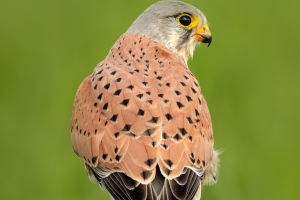With its elegant, bounding leap, the antelope is an animal that roams the forests and plains of Africa and Asia, relying on its incredible speed and agility to elude the most fearsome predators. Although very common and widespread, it still faces enormous dangers from excessive hunting and poaching.
Africa’s open grasslands and wooded bushlands support the most splendid biodiversity of small, medium and large antelope in the world. All are members of the Bovidae family, which also claims our domestic livestock. All antelope are ruminants. They have four stomachs for fodder in varying stages of digestion, and like domestic cattle, they reprocess already-swallowed fodder by chewing the cud.
All antelope have horns, they can be straight, spiral, curved or twisted; in some species they are only found on the males, whereas in others, such as gazelles, both males and females have them. The horns are made of a bony core encased in a hard material made largely of keratin (the same substance our fingernails are made of!). Hooves are another specialty for many antelope. Each hoof has a split down the middle, dividing the hoof into two toes.
Almost all antelopes are social animals, living in groups called herds. Some antelope are famous for their massive herds, like the thousands of wildebeests making their annual migration across the African plains. Antelopes are herbivores, with an odd exception: some duiker species have been known to kill and eat insects, small mammals, and birds.
Another important feature is the antelope’s visual acuity. They have horizontal pupils located on the side of the head that enable them to see predators coming from the periphery of their vision. The acute sense of smell also aids in communication. Specialized fluids secreted from scent glands around the face, knees, and hooves allow them to mark territory and communicate with other members. Antelopes also have a suite of whistles, barks, bleats, grunts, and moos. These vocalizations serve as a means of alarm calls, warnings, or greetings.
Antelope lives in almost all African habitats. Anywhere that humans have not extensively broken the soil, wild herbivores can be seen. Wildebeest and their alcelaphinid relatives favor open and wooded grassland, as there is more cover from predators. Impalas, however, prefer woodlands, and some duiker species prefer living in thick, almost rain-forest-type vegetation. Riverine strips and transition zones between vegetation types are also used by some species.
Gazelle have adapted to a wide range of habitats, from arid to semi-arid—and in the case of springbok and some Grant’s subspecies they have adapted to watered grassland, as preferred by the Thomson’s gazelle. Roan and sable inhabit grasslands that have good bush and tree cover, and both frequent well-watered grasslands and wooded valleys. In contrast, oryx prefer an arid habitat and can live in total desert conditions. Interestingly, as is the case with the steenbok, oryx (or gemsbok as they are known in Southern Africa) are also water independent. All species of reduncinae antelope prefer wetlands or tall, tussocked, marshy grasslands. Even hillside-living reedbuck are associated with wet grasslands and hill marshes.
Antelopes are some of the most common prey animals in Africa. They make a tempting meal for cheetahs, lions, hyenas, civets, pythons, and large birds. Because of the antelope’s incredible speed, many predators prefer to sneak up on them and pick off individual stragglers. The cheetah, as one of the few animals fast enough to catch them, relies on its pure speed. These chases often make for spectacular footage on nature documentaries.
These animals have a number of strategies to deal with a dangerous predator, the most important of which is their speed and agility. If the animal cannot evade its pursuer outright, then it may try to hide in water or foliage. Some species will actually freeze in place to avoid being noticed. If everything else fails, then the antelope may stand its ground and defend itself with its sharp horns.
Antelopes are hunted by humans for both their horns and their meat. Some cultures have local taboos against antelope hunting. However, the animal can still become accidentally ensnared in traps. Habitat loss is another significant threat to many types of antelopes.


